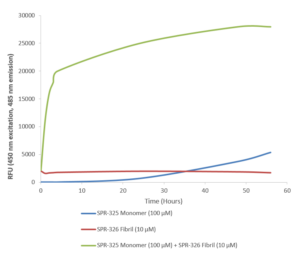Uncovering the Role of Reelin in Parkinson’s Disease
Parkinson’s disease (PD) is one of the most common neurodegenerative disorders, characterized by intraneuronal alpha synuclein inclusions called Lewy bodies and the loss of dopaminergic neurons in the substantia nigra pars compacta of the midbrain. These changes lead to motor dysfunctions such as tremor and rigidity and non-motor dysfunctions including depression and cognitive decline. Although dopamine replacement therapy is widely used for controlling the motor symptoms of PD, it is less effective at treating non-motor dysfunctions. This suggests that biomolecules other than dopamine may be involved in PD pathogenesis. Gene expression profiling supports this theory, consistently implicating non-dopaminergic biological pathways as PD drivers. Recent studies from Yonsei University show the signaling molecule Reelin to be a promising PD biomarker that might be harnessed for therapeutic benefit.
Reelin attenuates alpha synuclein aggregation in vitro
Reelin, a 410kDa extracellular matrix glycoprotein encoded by the RELN gene, is involved in neuronal migration and positioning during development, and influences neurotransmission and synaptic plasticity in the adult brain. To investigate the impact of Reelin on alpha synuclein aggregation, Eunju Cho of Yonsei University treated SH-SY5Y cells with StressMarq’s Human A53T Mutant Alpha Synuclein Pre-formed Fibrils (catalog# SPR-326) in the presence or absence of a recombinant human Reelin protein before performing a Thioflavin T assay to quantify the formation of alpha synuclein fibrils. In the study, Reelin was shown to inhibit fibril formation, suggesting that it might be exploited to treat PD1.
Reelin expression is disease-stage dependent
Reelin levels in the cerebrospinal fluid are known to differ between healthy individuals and PD patients. To determine whether these differences correlate with PD pathogenesis, Cho used techniques including qPCR, IHC, and Western blot to analyze brain tissue samples from a PD mouse model (and relevant controls) for gene and protein expression. Levels of RELN and Reelin were found to increase during early-stage PD but decrease during late-stage disease, indicating that Reelin could represent a useful biomarker for understanding disease progression1.
Reelin may help predict the value of environmental enrichment
Environmental enrichment (EE) is a form of rehabilitation based on stimulating sensory, cognition, social, and motor functions in PD patients. When the PD mouse model was exposed to EE for 8 weeks during the early stages of disease, degeneration of dopaminergic neurons and behavioral dysfunction were prevented. However, similar effects were not seen when the PD mouse model was exposed to EE during late-stage disease. By using Reelin as a biomarker of disease progression, clinicians could potentially predict the value of offering EE to PD patients1.
Reelin protects against LAMP1 depletion
In a follow-up study published in Neurobiology of Disease, Cho et al. sought to identify the underlying mechanism behind the preservative effect of EE on PD progression. Studies have illuminated that EE can protect TH+ dopaminergic fiber and cells, which express Reelin during mouse brain development. In this study, they treated StressMarq Alpha Synuclein PFF-induced cells with recombinant Reelin protein or a Reelin blocker (CR-50). A primary feature of PD, alongside the accumulation of alpha synuclein, is the depletion of lysosomal-associated membrane protein 1 (LAMP1). Interestingly, Reelin decreased alpha synuclein accumulation while increasing LAMP1 – effectively the opposite phenomena than what is seen in late-stage PD disease brains. Therefore, Reelin may not only be a useful disease biomarker but has potential to be an important therapeutic target itself.3
Reelin alleviates mesenchymal stem cell senescence
Mesenchymal stem cells (MSCs) can differentiate into neuron-like cells, making them promising tools for treating PD. In addition, adipose-derived MSCs (which are more easily harvested than brain-derived neurons) have been used for comparing gene expression between healthy individuals and PD patients – both to uncover the underlying mechanisms of PD and develop methods for improving MSC survival in vivo. In a paper published in Genes, Cho et al. also used StressMarq’s Human A53T Mutant Alpha Synuclein Pre-formed Fibrils (catalog# SPR-326), and showed MSC viability to be decreased during PD, with a corresponding increase in cell senescence2. Recombinant human Reelin could alleviate these effects, providing further impetus for continuing its investigation2.
StressMarq products support PD research
StressMarq’s Human A53T Mutant Alpha Synuclein Pre-formed Fibrils (catalog# SPR-326), were cited in both publications, where they were used for seeding alpha synuclein aggregation in vitro. The aggregation process could be inhibited by Reelin, which is now considered to be an important PD biomarker that might be utilized for therapeutic benefit.
Thioflavin T is a fluorescent dye that binds to beta sheet-rich structures such as those in alpha synuclein fibrils. Upon binding, the emission spectrum of the dye experiences a red-shift and increased fluorescence intensity. Thioflavin T emission curves show a limited increase in fluorescence (correlated to alpha synuclein aggregation) over time in A53T alpha synuclein monomers (SPR-325). A much greater increase in fluorescence is seen when 100 µM monomer (SPR-325) is combined with 10 µM of fibrils (SPR-326) as the fibrils seed the formation of new fibrils from the pool of active monomers. Thioflavin T excitation = 450 nm, emission = 485 nm. Note: We use molecular weight of 14.46 kDa for both alpha synuclein monomer and fibril in calculations. We load 100µL/well for Thioflavin T assay so 100 µM is 144.6µg/well and 10 µM is 14.46 µg/well.
Related StressMarq products
In addition to Alpha Synuclein Monomers, Oligomers and Pre-formed Fibrils, StressMarq offers a range of other antibodies, proteins, kits, and small molecules for Parkinson’s disease research, including amyloid beta and tau. StressMarq also sells antibodies to LAMP1 (catalog# SMC-140) and LAMP2 (catalog# SMC-141).
References
- Environmental enrichment reduced pathological α-Synuclein accumulation by restoring LAMP1 via Reelin in early stage of Parkinson’s disease. Cho, E. (2021) PhD Thesis, Yonsei University.
- Reelin Alleviates Mesenchymal Stem Cell Senescence and Reduces Pathological α-Synuclein Expression in an In Vitro Model of Parkinson’s Disease. Cho, E. et al. Genes (Basel). 2021;12(7):1066.
- Reelin protects against pathological α-synuclein accumulation and dopaminergic neurodegeneration after environmental enrichment in Parkinson’s disease, Cho, E. et al. Neurobiology of Disease. 2022;175:105898.



My husband Parkinson’s disease symptoms has greatly subsided since using the PD-5 protocol, almost all his symptoms has subsided 4 months into using the PD-5 protocol. Don’t give up hope.